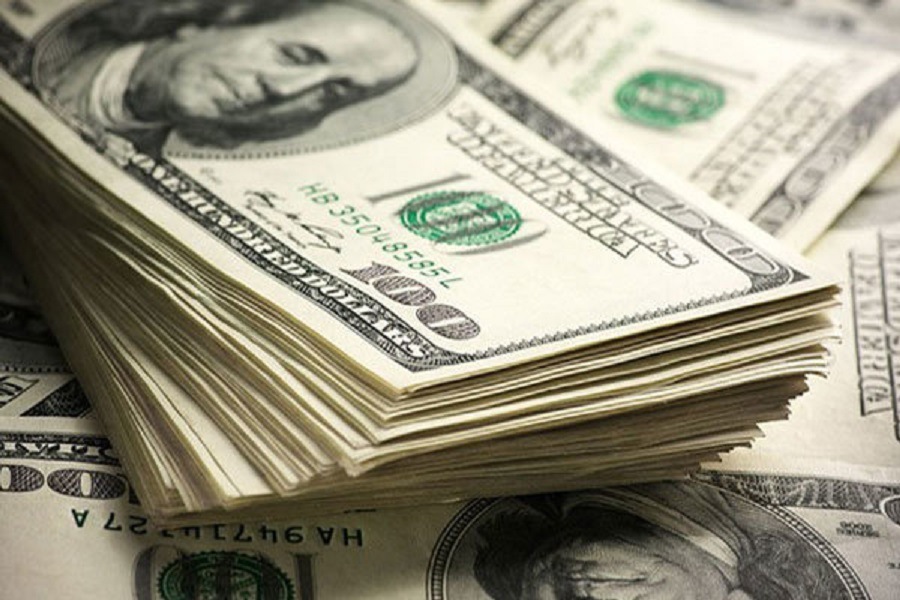RIO DE JANEIRO, BRAZIL – With tensions returning to the financial market, the dollar resumed its bullish trajectory after a brief respite at the start of the month, when it dropped below the R$5 level. The combination of a worsening external scenario and a worrying political and economic climate in Brazil pushed the US currency to its peak in a month.
At 3:45 PM (Brasília time), the dollar appreciated 2.36 percent against the real, quoted at R$5.4522 in purchase and R$ 5.4537 in sale, accumulating a 2.5 percent high this week. Since Tuesday, when it dropped to R$5.15, the currency has climbed R$0.30.

Much of this is related to the increase in risk aversion worldwide as the cases of Covid-19 rise again in several countries that have reopened their economies. In the United States, there were over 37,000 cases of the disease in a single day, the highest number ever recorded. The world’s largest economy has recorded over 2.4 million infections.
As a result, the governors of some American states have started to reverse plans to reopen activities after this surge in cases. However, New York City is headed for another reopening stage on July 6th, which will include restaurants, team sports, and beauty services. Elsewhere, Florida has seen an increase in cases, and Texas has ordered the closure of business establishments.
Despite being a global movement, the exchange rate in Brazil is again performing worse than its emerging country peers facing an increased apprehension on the fiscal issue.
The president of the Chamber of Deputies, Rodrigo Maia, said he will study the possibility of a change in the spending limit. Meanwhile, on social media, President Jair Bolsonaro announced the extension of the emergency aid in the amounts of R$500, R$400, and R$300. These matters create uncertainty regarding the country’s fiscal scenario and how this will impact the coming months in this crisis situation.
Following the statements on the spending ceiling, Maia again addressed the issue and stressed that the debate should only take place after the approval of the administrative, tax, and federal pact reforms. According to him, the Budget today is focused on past spending, and reforms are indispensable
“We need to find room in the budget to make more investments, but this cannot be achieved by creating more expenses or by increasing the tax burden […] We don’t need to touch the ceiling now,” he said, pointing out that the PEC (Proposed Constitutional Amendment) of the war budget has already solved the 2020 tax issue.
These statements have helped to ease tensions somewhat, pushing the dollar away from the day’s maximum, despite maintaining the spurt of over two percent.
Another factor weighing on the market was Central Bank President Roberto Campos Neto’s statement the day before. He said the currency’s volatility has increased and that he is considering the issue, but stressed that the exchange rate is fluctuating and that the Central Bank’s recent moves have been successful.
In this scenario, the real has been the most volatile among the major currencies in the past two weeks, behaving like a high beta asset amid global swings. This Friday, the Central Bank again acted on the exchange rate, selling US$502.5 million in cash auctions, while earlier it accepted US$1.5 billion in line auctions.

In an interview with Bloomberg, Hideaki Iha, Fair Broker’s foreign exchange operator, says that until the dollar reaches R$5.20, the Central Bank is allowing the market to “move”. But as the currency nears R$5.50, unless the authority intervenes, it risks reaching R$6. “It took a long time last time and when it looked, it was close to R$6. Looking back, the Central Bank realized it has to go in before that,” he said.
In his report on Friday, José Faria Júnior, director of Wagner Investments, alerts to the significance of the R$5.45 level, which can trigger higher hikes. According to him, the dollar is on a downward trend in the medium term and upward in the long term, but this may change with the breaking of some levels.
“Our currency is very volatile, rising R$0.30 between Tuesday afternoon and this morning. This is a moment for much attention, because over R$5.45 it may hit new highs,” concludes the analyst.
Source: Infomoney

